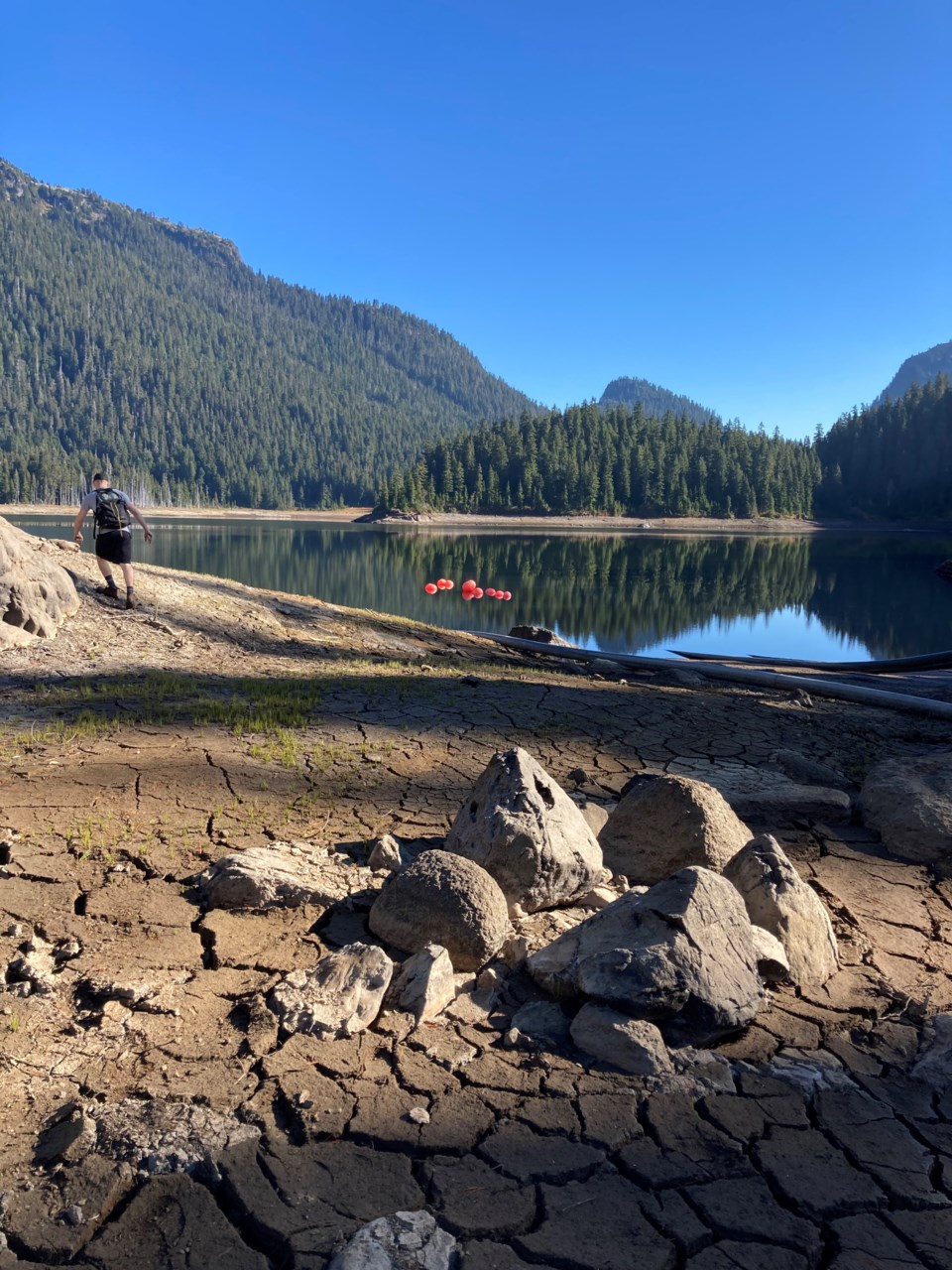Impacted Coasters will see no changes to the Sunshine Coast Regional District’s (SCRD) water regulations or the State of Local Emergency (SOLE) until multiple days of wet weather bring around 150 mm of rain to the Chapman watershed.
The SOLE and an order issued under it have been extended to midnight Oct. 31 by the province, the SCRD said in an Oct. 25 news release. The SCRD declared the SOLE on Oct. 17, and to remain in place, the order needs to be renewed weekly.
Effective Oct. 18, an order banning use of Chapman system drinking water by businesses that use large volumes of water, including alcohol producers, producers of non-medical cannabis, those working with concrete, cement, asphalt, gravel, or aggregate and those packaging water for sale to others came into effect.
Rains helps and hurts
The release stated that with recent rain in the area, “staff have observed an increased flow in Chapman Creek. The siphon systems will continue to release water from both Chapman Lake and Edwards Lake until creek levels are high enough that the siphons are no longer needed. Staff are continuing to monitor watershed temperatures and freezing conditions that may impact operations of the siphons.”
The repositioning of the Edwards Lake siphons is on hold as precipitation forecast for the area could increase lake levels.
But the rain added turbidity to Gray Creek and water from that source stopped being added to the Chapman system on Oct. 24. “With rain in the forecast, we knew that would be a problem,” SCRD manager of infrastructure Remko Rosenboom told Coast Reporter. He indicated “creek flows had been dropping due to the ongoing drought, but Gray was providing about 15 to 17 per cent of the daily supply.”
As the Coast heads into what are anticipated to be the rainier fall and winter months, he said taking water supply from Gray Creek won’t likely happen again until into 2023. “It usually takes several weeks of dry weather for that creek to clear up,” he said.
Rosenboom told Coast Reporter that Chapman Lake is over five meters lower than its normal level and it needs to see an increase of more than three meters for the SCRD to resume supplying water from the lake through its valves rather than the siphons.
Another complicating factor are the lower air temperatures at the lakes. “It is current freezing up there, it might even be snowing, and in freezing conditions the lake level does not rise, because there is no runoff from the surrounding areas towards the lake,” he noted. In an earlier report to the board, he had remarked that the operation of the siphon system had not been tested when there is ice on the lake.
EOC looks to expand water sources
On Sept. 27, SCRD activated an emergency operations centre (EOC) to address a drought that began to affect the area with a stretch of warmer and drier weather starting in July. EOC efforts to get water from more sources into the Chapman system, including preliminary work to provide temporary early access to water from the SCRD’s Church Road well field, are under way. “If needed, it is anticipated this work can be completed by early November,” the release stated.
A 20 per cent reduction in the amount of water the SCRD releases from Chapman Lake to its creek for environmental flow needs (EFN) will also remain in place until Stage 4 water restrictions are rescinded or until salmon are confirmed to be migrating upstream. Rosenboon said with the recent rains and the EFN reduction, flows from Chapman Creek are in the magnitude of 300 litre per second and can make up the difference made by taking Gray Creek’s contributions out of the equation.
Addressing leaks a priority
In addition, the SCRD has staff working directly with properties experiencing large water leaks.
On Oct. 21 water was shut off to the Creekside and Bayside campgrounds in Sechelt, which serve as both campgrounds and homes for full-time area residents. Creekside had its water service restored between the hours of 8 a.m. and 2 p.m. as of Oct. 22. Service during restricted hours to Bayside came online on Oct. 25. Manager Colleen Whitney said decisions on how long it will continue are being made of a “day to day basis." Both businesses told Coast Reporter they are working to address suspected leaks on their properties.
According to the release, “SCRD staff continue to communicate with more properties that are working to fix leaks. It is critical these leaks are repaired, not only during this State of Local Emergency and during Stage 4 water conservation regulations, but to ensure water leaks are resolved moving forward. While most leaks are small, one that was very recently fixed was leaking the equivalent of the indoor water use of about 160 residential properties.”
Use levels lowered
“This week, community use [from the Chapman system] remains around 8.5 million litres per day,” according to the SCRD's release, and it thanked all in the community that had reduced their level of water use.



